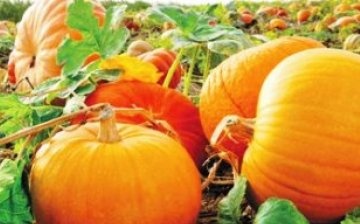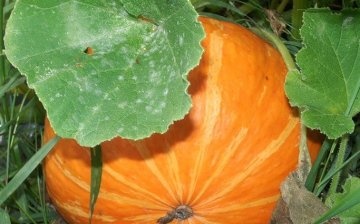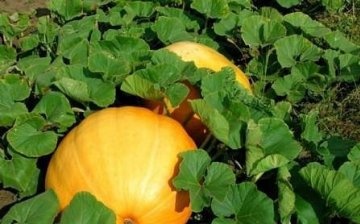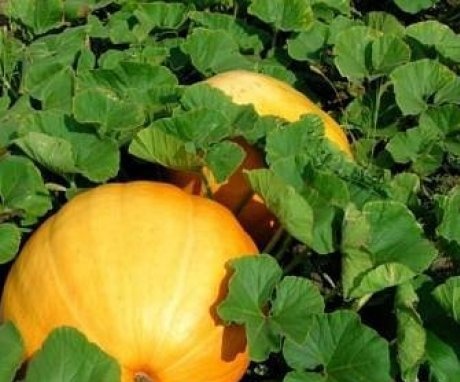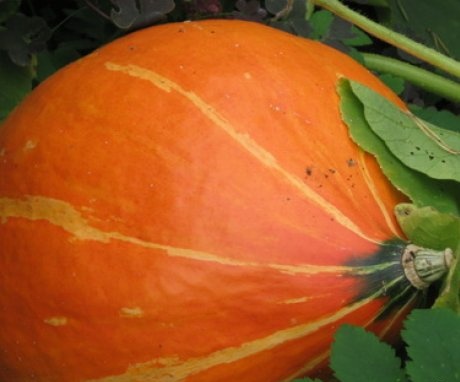How to plant and grow pumpkin?
Pumpkin is one of the most beautiful vegetables in our gardens. She is also very useful for human nutrition. Pumpkin is a dietary and medicinal product. In addition, it has a pleasant taste. Pumpkin is used to make porridge, mashed potatoes, caviar, jam and jams. It is stewed, baked, pickled, used in pie fillings. It is used for medicinal and prophylactic purposes.
Content:
Pumpkin fruits are rich in sugars, starch and carotene.
How to plant pumpkin right and grow it to get a rich harvest of this beautiful, vibrant vegetable?
Landing
To begin with, pumpkin, like most vegetables in our gardens, is best grown from seedlings at home. You can prepare seeds for planting as follows: warm them up for 2-3 hours at a temperature of about 60 degrees. It is best to plant seeds for seedlings in peat pots - this way it will be more convenient to identify pumpkin sprouts for permanent residence without damaging the root system during transplantation. From the appearance of the first shoots to the time of transplanting the plant to the site, the optimal time is 20 days. So the plant will gain strength, but still not stretch too much with a lack of lighting at home.
It is best to plant pumpkin after perennial and annual grasses, winter cereals, corn and vegetables: eggplant, beet, carrot, legumes, peppers, tomatoes, potatoes, cabbage, onions. It is not recommended to sow pumpkin after melons and gourds for 4-5 years, so that fungal diseases do not develop.
Since autumn, the soil must be dug up, adding manure or compost (4-6 kilograms), superphosphate (25-30 grams), potassium chloride (10 grams) per 1 square meter of area. In the spring, the area is leveled with a rake and ammonium nitrate (20 grams per square meter) is added.
Planting pumpkins is best done on compost heaps or in compost barrels. Such places for growing pumpkins and zucchini are also called warm beds. But pumpkin is thermophilic and when the temperature drops, it can die or get sick.
A lot of space is needed for a pumpkin, because some varieties produce fruits of simply enormous sizes. Therefore, between plants when planting, it is necessary to maintain a distance of about 80-90 centimeters.
Pumpkin seedlings are planted in the ground or seeds are sown: dry or sprouted. The wells are fertilized with humus (half a bucket per well). If the soil is dry, then warm water (1.5-2 liters) is poured into each hole. The pits are mulched using humus or peat chips.
Planting pumpkin sprouts or sowing it with seeds in open ground is possible only when the air temperature during the day remains at least + 15-18 degrees. With a significant decrease in night temperatures, pumpkin during the growth and flowering period is best covered overnight with film, acrylic, etc. And if pumpkin seedlings are afraid of the cold, then an adult plant and pumpkin fruits feel good at temperatures down to -1 degrees.
To reduce the risk of seedling death from night frosts, seeds are sown densely at different depths.
When shoots appear, they are thinned out, leaving one at a time (for large-fruited) or two (for hard and nutmeg pumpkin).
Care
Before the plants grow, they are weeded, destroying the weeds and loosening the soil (at least three times). Then only selective weeding is carried out.
Watering
Pumpkin loves moisture very much, but thanks to its long root system, it tolerates drought relatively easily. She especially needs water when there is massive flowering and fruit setting. In this regard, if there is a long dry and hot weather, the plants should be watered twice: before mass flowering and before the formation of fruits. For watering, you can take only warm water, since plants die from cold water.
Top dressing
Fertilize the pumpkin for larger fruit. The first top dressing carried out when 3-5 leaves appear on the plant, and the second after the whips begin to form. An excellent result is obtained by fertilization with nitrofoskoy (10-15 grams per bush), ash (1 glass per plant) and mullein diluted in water in a ratio of 1: 8 (2 liters per bush).
Formation of bushes
To obtain a good harvest, the bushes are formed, leaving one or two stems at a time, pinching off the extra stems.
It is recommended to cover the scourges with earth in several places. In this case, the wind will not turn them over, and the plants will receive additional nutrition due to the formation of additional roots.
Harvesting
Cleaning is done in early autumn in dry weather. The fruits are left to dry in the air, and then sent for storage. Store at 10-20 degrees Celsius in a ventilated area.
Diseases and pests
Most often, pumpkin is affected by bacteriosis, white and root rot, powdery mildew, cucumber mosaic. The most common pests are melon aphids, slugs, spider mites and whitefly.
To combat pests and diseases, chemical preparations or plant infusions are used.



